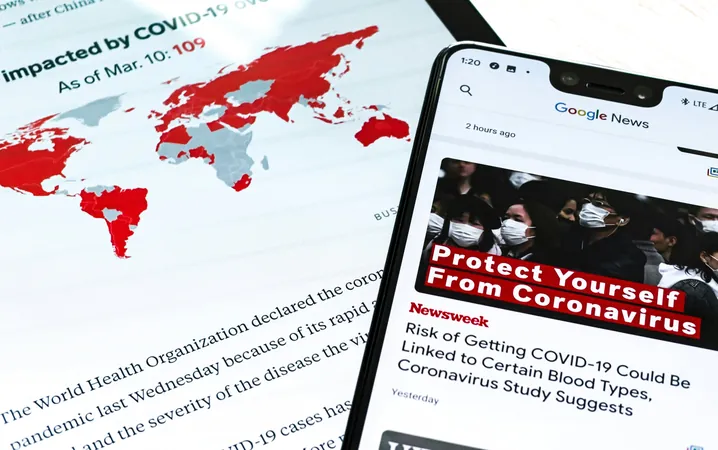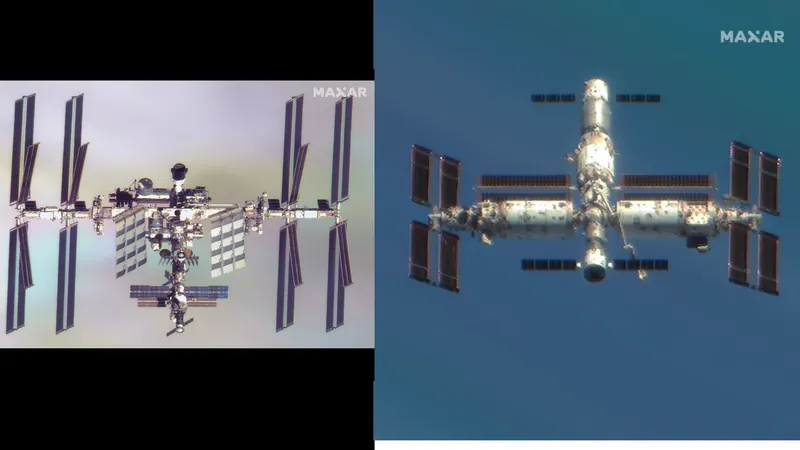
Navigating the Minefield: How Scientists Can Master the Art of Communication
2024-11-04
Author: Yu
In the intricate world of science, the challenges extend far beyond research itself. One of the greatest hurdles scientists face is effectively communicating their findings in a way that resonates with the public while maintaining social responsibility. This pressing issue has led a researcher from Michigan State University, Kevin Elliott, and his colleagues from various institutions to delve into this complex landscape, exploring communication strategies tailored towards environmental health sciences.
As Elliott aptly puts it, “Words matter, and misleading information is prevalent everywhere.” With the rise of misinformation, there's an urgent need for scientists to adopt a more sophisticated and deliberate approach in how they convey their messages.
In a groundbreaking study published in the renowned journal Environmental Health Perspectives, Elliott and his team focused on the communication of the impacts of endocrine-disrupting chemicals. These compounds can disrupt natural hormone functions, leading to various health issues such as sexual development disorders, neurodevelopmental challenges, and obesity. The researchers evaluated four distinct communication strategies:
1. Framing the Discussion Around Masculinity Challenges:
How these chemicals can uniquely affect male development.
2. Introducing the Concept of Neurodivergence:
A nuanced discussion of how these chemicals may influence brain development.
3. Developmental Origins of Health and Disease:
A focus on how early life exposures can have long-term health consequences, specifically in relation to obesity.
4. Reclassifying Obesity as a Disease:
A scientific yet sensitive viewpoint that aims to broaden treatment eligibility.
Interestingly, while discussing obesity as a disease may aid those struggling with weight management in accessing necessary treatments, it also risks deepening societal stigma surrounding the condition. The potential negative impacts of such a classification underscore the complexities scientists must navigate; an attempt to foster understanding can also lead to increased misconceptions and pressure on individuals, particularly mothers, regarding their health choices and environmental exposures during pregnancy.
Elliott insists, “There are trade-offs that environmental health scientists need to make as they strive to communicate an accurate message.” The ultimate goal is to deliver practical, relevant information while minimizing instances where it could be misinterpreted or misused.
To tackle these concerns, Elliott and his team recommend several innovative strategies, underscoring the importance of tailoring messages to diverse audiences, utilizing community feedback, and actively engaging in discussions that promote clarity and understanding. By adopting these approaches, scientists can bridge the gap between their research and society, fostering an informed public that is equipped to engage critically with scientific narratives.
As science continues to play a pivotal role in our understanding of health and the environment, enhancing communication strategies is more critical than ever. Will these efforts to demystify science ultimately lead to a better-informed public, or will the complexities of interpretation continue to reign? The stage is set for a transformative dialogue.


 Brasil (PT)
Brasil (PT)
 Canada (EN)
Canada (EN)
 Chile (ES)
Chile (ES)
 Česko (CS)
Česko (CS)
 대한민국 (KO)
대한민국 (KO)
 España (ES)
España (ES)
 France (FR)
France (FR)
 Hong Kong (EN)
Hong Kong (EN)
 Italia (IT)
Italia (IT)
 日本 (JA)
日本 (JA)
 Magyarország (HU)
Magyarország (HU)
 Norge (NO)
Norge (NO)
 Polska (PL)
Polska (PL)
 Schweiz (DE)
Schweiz (DE)
 Singapore (EN)
Singapore (EN)
 Sverige (SV)
Sverige (SV)
 Suomi (FI)
Suomi (FI)
 Türkiye (TR)
Türkiye (TR)
 الإمارات العربية المتحدة (AR)
الإمارات العربية المتحدة (AR)